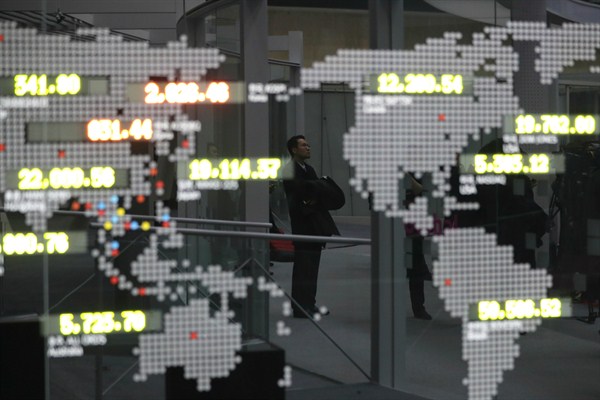The world economy is caught in a vicious cycle that it cannot seem to break. It all began in 2008 with the shock of the global financial crisis followed two years later by the slow drip of the European debt crisis. In response to these events and the worldwide recession that accompanied them, many countries took steps to protect their economies from international instability and foreign competition. Yet creeping protectionism just acted as a further drag on economic growth. Continued tepid growth helped fuel the growing protectionist backlash in the industrialized world, which is poised to deliver a level of economic closure and conflict not seen in decades.
The headline events of 2016—Brexit, the election of Donald Trump in the United States, a struggling Chinese economy—do not represent the start of a process of “deglobalization.” Rather, they themselves are a product of a slow unraveling of global economic interconnectedness that has been unfolding for nearly a decade now.
Years before Trump was railing about Mexico and China stealing American jobs, protectionism was on the rise. Trade conflicts were becoming more common, and trade growth had slowed to levels not seen in decades. Capital, too, had become increasingly trapped inside national borders, as major banks reduced their international activity and governments steadily embraced the use of measures controlling financial flows in and out of their economies.

